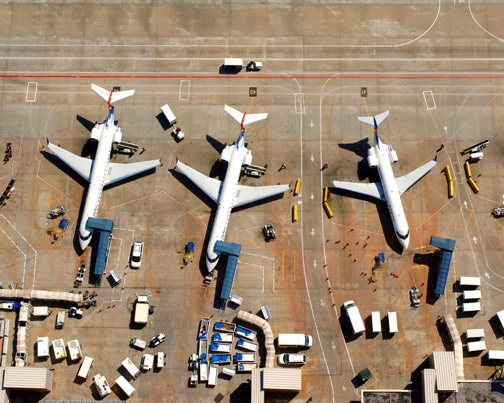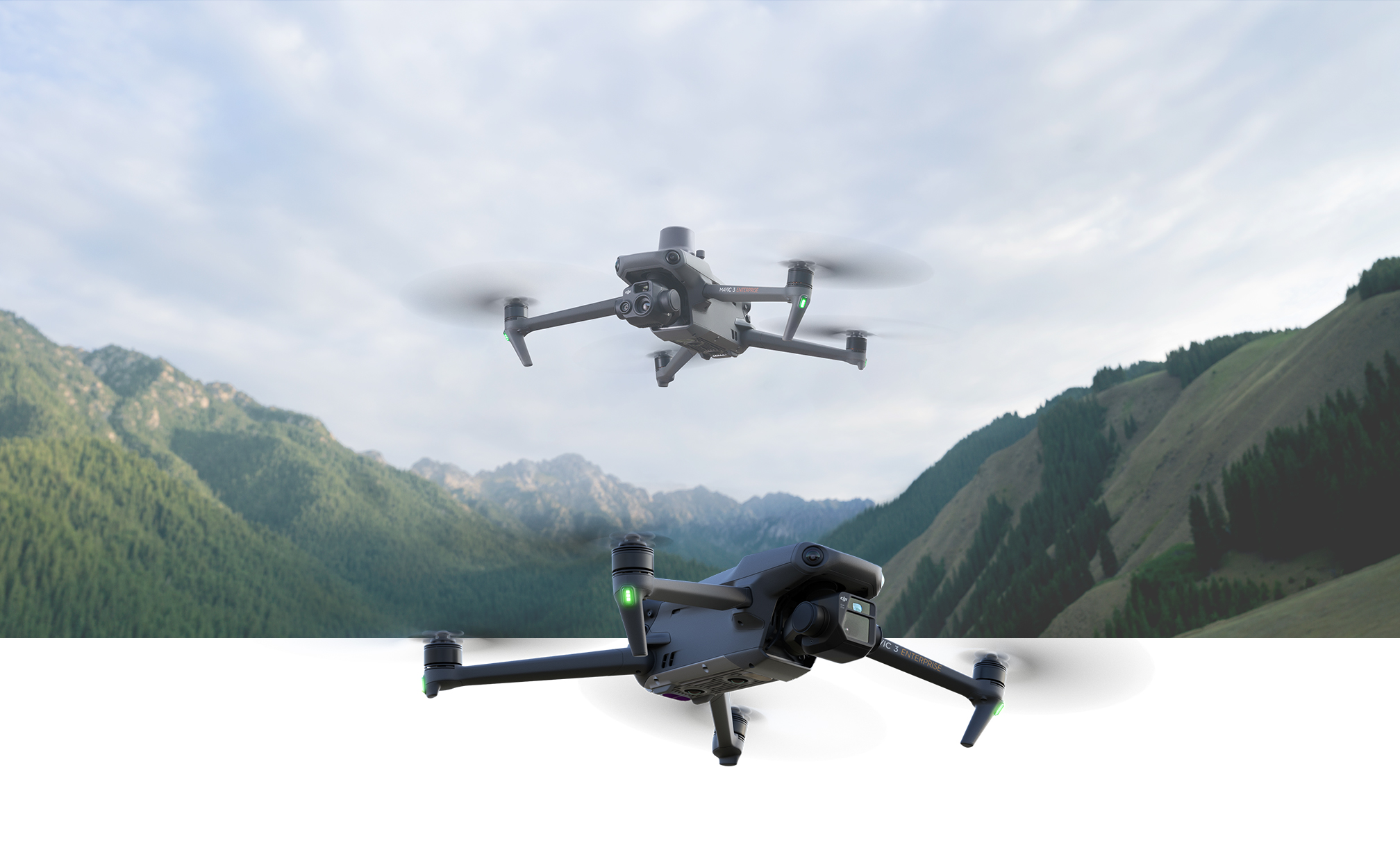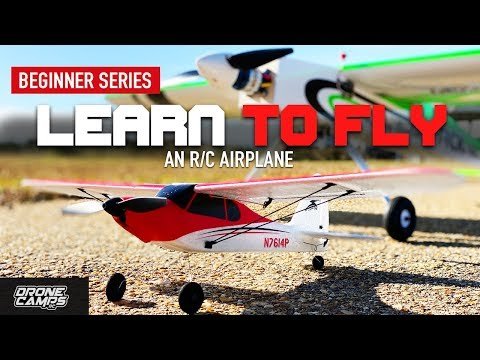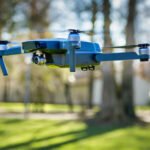Introduction
Overview of Drone RC Planes
Flying drone RC planes has become a fantastic hobby that attracts enthusiasts from all walks of life. Whether you’re a tech-savvy pilot or just someone seeking a new adventure, there’s something uniquely satisfying about controlling an aircraft from miles away. Drone RC planes, short for radio-controlled planes, combine the thrill of flying with the innovation of modern technology. Unlike traditional model airplanes, drone RC planes come equipped with advanced technology like GPS, cameras, and smart sensors. You can find a wide range of sizes and styles—from sleek racing drones designed for speed, to exquisite scale models that replicate real aircraft. One personal example I have is when I first tried flying my drone RC plane. The excitement of seeing it lift off the ground and soar through the air was unlike anything I had experienced before. As I maneuvered through the skies, I felt like an astronaut in an endless void—each curve and dip transformed into a dance with the wind. 🛩️ For newbies, it can seem daunting, but once you get the hang of it, you’ll soon discover that you’re in control of a flying marvel!
Benefits of Flying a Drone RC Plane
The perks of taking to the skies with drone RC planes extend far beyond mere enjoyment. Here are some of the key benefits you might experience:
- Mental Health Boost:
- Like any engaging hobby, flying drone RC planes can help reduce stress. Focusing on flying diverts your mind from daily worries, allowing you to immerse yourself in the moment.
- Enhanced Coordination:
- Operating a drone RC plane hones your hand-eye coordination. As you manipulate the remote controls, you refine your reflexes. This skill transferably benefits other activities in your life.
- Community Engagement:
- Joining a local drone club or online forum can lead to friendships with others who share your passion. It’s a great way to learn, share experiences, and even engage in friendly competition.
- Learning Opportunities:
- With regular practice, drone flying can teach you valuable skills, such as basic physics concepts, navigation, and even aerial photography techniques.
- Opportunity for Adventure:
- Drone flying allows you to explore new landscapes, whether you decide to capture stunning views of a mountain range or buzz through a cityscape. You can seek out new places to fly, and discover hidden gems in your community.
- Participating in Competitions:
- For those with a competitive spirit, there are countless drone racing events. You can pit your skills against others, all while enjoying camaraderie and shared experiences.
As you embark on your drone journey, you may notice other personal anecdotes surfacing. I remember one sunny afternoon with my friends when we decided to hold an informal drone race in a nearby park. The laughter and exhilaration of dodging trees and looping around our makeshift track created memories that we still reminisce about today. The benefits of flying a drone RC plane are immense. They not only provide an adrenaline rush but also empower you to develop skills and a sense of community. As you reflect on these benefits, ask yourself: What do you hope to gain from this hobby? Whether it’s the thrill of flight, the chance to connect with others, or simply a break from routine, there’s a world waiting for you in the clouds. Consider this your invitation to explorer your passion!

Choosing the Right Drone RC Plane
Understanding Different Types of Drones
Once you’ve decided to dive into the world of drone RC planes, the next exciting step is choosing the right type for you. With a plethora of options available, understanding the various types of drones will make your selection process much smoother. Here’s a breakdown of the main categories:
- Ready-to-Fly (RTF) Drones:
- Ideal for beginners, RTF drones come fully assembled and include everything you need to get started. Just charge the battery, and you’re ready to take flight.
- Personal Experience: My first drone was an RTF model. It was incredibly easy to set up, allowing me to focus on learning how to fly rather than fumbling with construction.
- Bind-and-Fly (BNF) Drones:
- BNF models require a remote control but come pre-assembled. These are great for those who already own a compatible transmitter.
- Advantage: You can customize it according to your preferences, but it might be a bit more challenging for total beginners.
- Almost-Ready-to-Fly (ARTF) Drones:
- These require some assembly and generally offer more flexibility in terms of customization. They’re perfect for intermediate to advanced pilots who enjoy building and tweaking their machines.
- Tip: If you’re adventurous and technically inclined, ARTF can provide a rewarding experience.
- Fixed-Wing Drones:
- These look similar to traditional airplanes and are generally faster and have longer flight times. However, they require a bit of skill to fly, especially during takeoff and landing.
- Personal Anecdote: I remember my first fixed-wing experience—it felt like piloting a real aircraft, high-fiving the clouds!
- Multirotor Drones:
- These are the most common type and can be divided into quadcopters (four rotors), hexacopters (six rotors), and octocopters (eight rotors). They are versatile and typically easier to control.
- If you’re looking for agility and stability, multirotors may be your best bet.
Exploring different types can give you a clear idea of what you want and need. More than just functionality, think about your flying style and the environments you’ll be in!
Factors to Consider When Selecting a Drone RC Plane
When selecting the right drone, several factors should take precedence. Here’s a list of essential considerations that can help you make an informed decision:
- Skill Level:
- Are you a beginner, intermediate, or seasoned pilot? It’s crucial to choose a drone that matches your skill level to avoid frustration.
- Beginners might prefer simpler RTF drones, while experienced fliers may enjoy the dynamics of BNF models.
- Budget:
- Drones range widely in price, so determine how much you’re willing to invest. More expensive models often come with enhanced features and durability.
- Example: I once splurged on a mid-range drone, and the quality was evident—better flight time, camera performance, and overall stability!
- Purpose:
- What do you intend to do with the drone? Whether it’s for fun flying, racing, or aerial photography, your needs will influence your choice immensely.
- Make a list of features important to you: camera quality, flight time, range, etc.
- Battery Life and Range:
- Always check the battery specifications. A longer flight time means more fun without frequent interruptions for charging. Similarly, consider the operational range; how far can your drone fly?
- Pro Tip: Investing in extra batteries can make a world of difference for extended flying sessions.
- Durability and Repairability:
- Accidents happen! Choose a drone with a sturdy build and easily replaceable parts. This resilience can save you money in the long run.
In conclusion, choosing the right drone RC plane involves understanding the various types available and considering the factors that matter most to you. Take your time, evaluate your options, and you’re sure to find the perfect match that meets your flying aspirations! Whether you decide to soar for pleasure, engage in competitions, or capture breathtaking aerial footage, the right drone will amplify your experience in this exhilarating hobby. So, strap in, and let the adventure begin! 🛩️✨

Getting Started with Your Drone RC Plane
Setting Up Your Drone RC Plane
Once you’ve selected the perfect drone RC plane for your flying adventures, it’s time to set it up and prepare it for takeoff! The setup process might seem intricate at first, but with a step-by-step approach, you’ll have your drone ready in no time.
- Unboxing Your Drone:
- Carefully remove your drone and accessories from the box. Take a moment to appreciate your new gadget (trust me, you’ll be excited!).
- Make sure that you have everything on the list: drone body, remote controller, batteries, charger, and any additional gadgets (like cameras).
- Charging the Battery:
- Before you fly, your drone’s battery needs a full charge. Connect it to the charger provided and monitor it until it reaches full capacity—it’s crucial for optimal performance.
- A quick tip: While waiting, read through the manual to familiarize yourself with features and safety guidelines.
- Assembling Components:
- Depending on your model, you might need to attach wings, propellers, or other components. Ensure everything is secure; loose parts can lead to mid-air issues.
- When setting up propellers, check that each one spins freely and that they’re aligned correctly (consult your manual for specific instructions).
- Pre-Flight Inspection:
- Conduct a thorough inspection before your first flight. Check propellers for damage, ensure the battery is securely attached, and confirm that the controller is synced with the drone.
- Example: During my first flight, I was eager and skipped the pre-flight check—only to find one propeller wasn’t attached fully. Fortunately, I caught it just in time!
- Finding a Suitable Flying Location:
- Choose a wide, open space away from obstacles, people, and restricted areas. Parks, beaches, or even spacious backyards work well for beginners.
- Remember, some areas may have regulations regarding drone flying, so it’s good practice to do a little research beforehand.
Following these steps, you’ll have your drone ready for takeoff!
Understanding Remote Control Functions
Now that your drone is set up, the next step is getting familiar with the remote control functions. Knowing how to operate your controller is crucial for a smooth flight experience. Let’s break down the common controls and features you’ll encounter:
- Throttle (Left Stick):
- This controls your drone’s altitude. Pushing the throttle upward will lift your drone, while pulling it down will bring it back to the ground.
- As a beginner, practice gentle adjustments until you find that sweet spot of elevation.
- Yaw, Pitch, and Roll (Right Stick):
- Yaw (Turning Left/Right): Rotates the drone around its vertical axis.
- Pitch (Forward/Backward): Tilts the drone forward or backward, enabling it to move in those directions.
- Roll (Side-to-Side): Tilts the drone to the left or right so it can move laterally.
- It takes practice, but master these basics, and your flights will become seamless!
- Trim Buttons:
- These help to stabilize your drone while in flight. If you notice drifting, using the trim buttons can help you adjust the drone’s flight path.
- Don’t hesitate to adjust these while in the air for optimal control.
- Camera Controls (If Applicable):
- If your drone has a camera, familiarize yourself with the photo and video capture buttons.
- It can be awe-inspiring to capture breathtaking aerial shots!
- Emergency Functions:
- Most modern controllers include a “return to home” feature or an emergency stop button. Knowing where these are can be a lifesaver for reorienting or safely landing your drone in tricky situations.
As you navigate the remote, take time to practice these functions in a safe space. 🛩️ For me, the learning curve was all about balancing the controls while staying mindful of my surroundings. The more you practice, the more intuitive flying becomes! In conclusion, setting up your drone RC plane and understanding its control functions are essential first steps in your flying journey. Take your time, practice, and soon you’ll be zipping through the skies with confidence! Enjoy the freedom and thrill that come with piloting your very own drone RC plane. Happy flying! ✈️💨

Flying Techniques for Beginners
Basic Drone RC Plane Controls
With your drone set up and an understanding of the remote control functions, it’s time to delve into the exciting world of flying! Familiarizing yourself with the basic controls will make your initial flights easier and more enjoyable. Here’s a breakdown of key flying techniques:
- Takeoff:
- To initiate your flight, gradually increase the throttle on the left stick until the drone lifts off the ground.
- Keep it steady—too much throttle can lead to a bumpy ascent. Start slow and steady, aiming for about 3-5 feet above the ground for your initial altitude.
- Hovering:
- Once airborne, practice hovering in a stable position. Adjust the throttle to maintain a constant altitude. This skill is crucial for taking clear photos or videos and setting up for maneuvers.
- Pro Tip: Use the trim buttons to help stabilize your drone if it’s drifting off to one side.
- Turning and Directional Control:
- For turning, move the right stick slowly left or right to yaw. Don’t rush it; small adjustments are key to smoother turns.
- To move forward, tilt the right stick slightly forward while maintaining altitude with the left stick.
- Landing:
- Begin by lowering the throttle gradually as you approach the ground. A steady descent will help in achieving a soft landing.
- Remember to keep an eye on your surroundings. As you get close to the ground, the final few feet of descent should be cautious; too much speed can cause a rough landing.
- Practice Makes Perfect:
- The more you fly, the more comfortable you’ll become with the controls. Begin with short flights and gradually introduce more complex maneuvers as your confidence increases.
I can vividly remember my first solo flight. After several practice sessions, I finally took off, and although I experienced a few wobbles, steady correction led to a perfect hover. The sense of achievement was phenomenal! 😄 Just be aware: it’s totally natural to make mistakes—it’s all part of the learning process!
Safety Tips for Novice Pilots
With great flight power comes great responsibility! As a novice pilot, understanding safety protocols is essential for ensuring a smooth experience for yourself and those around you. Here are some key safety tips:
- Check Local Regulations:
- Before you take to the skies, ensure you familiarize yourself with local drone flying laws. Some regions might have strict regulations about where you can fly.
- Always Avoid People and Animals:
- Maintain a safe distance from crowds, pets, and wildlife to prevent any accidents. A clear flying area not only helps you focus but keeps everyone safe.
- Fly within Line of Sight: -Always keep your drone in view. This expands your awareness of its surroundings and enhances control, making maneuvers and landings easier.
- Pre-Flight Safety Checks:
- Before flying, conduct a thorough check of your drone, including battery levels, propeller integrity, and remote control functionality. A little diligence can save a lot of headaches later.
- Weather Conditions:
- Avoid flying in high winds, rain, or extreme temperatures. Good weather makes for better flying, and you’ll also minimize the risk of malfunctions or crashes.
- Plan Your Flight Path:
- Have a clear plan of where you want to fly ahead of time. Knowing your intended route helps you stay focused and reduces sudden changes that could lead to accidents.
- Practice Emergency Procedures:
- Familiarize yourself with emergency functions, such as “return to home.” Being prepared can prevent panic in case things don’t go as planned.
In my early days, I learned the hard way about moving too close to trees during a practice flight. A gust of wind pushed my drone away, and while it was all in good fun, it taught me the importance of maintaining safe distances. Now, it’s one of my fundamental flight rules. In conclusion, mastering basic drone controls and adhering to safety protocols are essential skills for any beginner. With repeated practice and a focus on safety, you’ll find yourself exploring the skies with confidence and ease. Embrace the experience, enjoy the journey, and get ready for many thrilling flights ahead! 🛩️💫

Advanced Flying Techniques
Mastering Stunts and Maneuvers
Now that you’ve built a solid foundation as a drone RC plane pilot, it’s time to step up your game and add some flair to your flying! Mastering stunts and maneuvers not only showcases your skills but also enhances your overall flying experience. Here are some exciting stunts and techniques you can try out:
- Barrel Roll:
- This stunning maneuver involves rolling your drone around its longitudinal axis. To execute, push the right stick in the direction you want to roll while managing altitude with the left stick.
- Start at a higher altitude to give yourself space for recovery and practice this move a few times to find the balance.
- Immelmann Turn:
- This combination move allows you to gain altitude while reversing direction. Apply upward elevator input abruptly, followed by a roll to turn back in the opposite direction.
- Tip: It’s perfect for quickly transitioning in crowded flying spaces. Just anticipate your next move for a graceful finish!
- Dutch Roll:
- This maneuver creates a side-to-side oscillation effect. Initiate a slow turn, then lightly push the opposite direction to induce the roll! It adds flair to your flights and shows off your handling skills.
- As with all maneuvers, practice in open spaces to avoid obstacles, and always keep your altitude monitored.
- Looping:
- Performing loops requires good throttle management. Initiate with an upward climb, then gently pull back on the throttle to maintain the loop’s arc. Gradually lower the throttle as you complete the loop for a clean exit.
- I remember the first time I executed a loop. It felt like I was flipping through the sky like an acrobat—pure joy! Practice this multiple times to get the timing just right.
- Diving and Climbing:
- Combining climbs and dives will add exciting dynamics to your flying style. Quickly pull back on the stick for a climb, then release to dive—emphasize smooth transitions for the best effect.
- Make sure to keep an eye on altitude to prevent crashes during dives.
As you practice these stunts, remember it takes time to perfect them. Don’t be discouraged by minor mishaps; they’re all part of the learning process. Embrace those moments, laugh it off, and try again!
Navigating Different Weather Conditions
Weather can significantly impact your flying experience, so understanding how to navigate various conditions is crucial for every advanced pilot. Different environments pose unique challenges, but by adapting your techniques, you can still enjoy thrilling flights regardless of the situation. Here’s what to keep in mind:
- Windy Conditions:
- While a light breeze is manageable, high winds can significantly affect your control. If conditions exceed your comfort level (usually around 15 mph), it’s best to delay your flight.
- When flying in wind, keep your drone low and operate against the wind before turning back to utilize the wind’s assistance for a return flight. This technique helps preserve battery life too!
- Rain and Moisture:
- Most drones are not waterproof, so avoid flying in rainy conditions. If you must fly in damp environments, consider purchasing a waterproof casing or drone specifically designed for wet conditions.
- I once flew during a drizzle with an unprotected drone, which led to a power failure mid-flight. Remembering that lesson, I’ve become more cautious about weather forecasts!
- Extreme Temperatures:
- Cold weather impacts battery performance. Always monitor your battery levels closely and avoid long flights in freezing conditions. A pre-warmed battery can also enhance performance during winter months.
- Conversely, hot weather can lead to overheating. Ensure your drone has proper ventilation and avoid prolonged exposure to direct sunlight.
- Foggy Conditions:
- Reduced visibility can pose risks while flying. Avoid flying in foggy weather, where you could lose sight of the drone quickly, making it difficult to control.
- If you’re ever caught in fog unexpectedly, gently descend and land in an open area as soon as it’s safe to do so.
Navigating the elements takes practice and keen awareness. Each flight teaches valuable lessons about handling your drone in varying conditions, ultimately making you a more well-rounded pilot. In summary, mastering stunts and maneuvering through different weather conditions are essential skills for any advanced drone RC plane pilot. The sky is your playground, and whether you’re flipping through loops or battling the wind, keep learning, stay safe, and most of all—enjoy each moment up there! 🛩️✨

Maintenance and Care for Your Drone RC Plane
Cleaning and Storage Tips
Keeping your drone RC plane in top condition is essential for optimal performance and longevity. Regular maintenance not only prevents issues but also ensures that you enjoy every flight without a hitch. Let’s explore some key cleaning and storage tips that will help extend the life of your drone.
- Regular Cleaning Routine:
- After each flight, take a few moments to inspect and clean your drone. Dust, debris, or even splashes of water can affect performance.
- Use a soft brush or cloth to gently remove dirt from the body and propellers. Avoid harsh chemicals, as these can damage the drone’s finish and components.
- Propeller Maintenance:
- Inspect propellers for chips, cracks, or bends before each flight. Damaged propellers can lead to unstable flights. If you notice any damage, replace them immediately.
- Store spare propellers safely in a case to prevent any physical damage during transport.
- Battery Care:
- Batteries are the lifeblood of your drone. Always charge LiPo batteries following the manufacturer’s recommendations. Avoid overcharging or fully depleting them to maximize their lifespan.
- Store your batteries in a cool, dry place. If you plan to store them for an extended period, consider charging them to about 50% capacity.
- Storage Properly:
- After cleaning, store your drone in a designated case or bag. This protects it from dust, moisture, and physical impacts, especially during transportation.
- I learned the hard way when my drone sustained minor scratches because I didn’t secure it properly in the trunk of my car. Now, I always carry a soft-lined case whenever I’m on the go!
- Avoid Direct Sunlight:
- When not in use, store your drone away from direct sunlight or extreme temperatures. Both can degrade materials over time, affecting the overall integrity and functionality of your aircraft.
By incorporating these simple cleaning and storage habits, you will keep your drone in excellent working condition, allowing you to focus on flying rather than repairs!
Troubleshooting Common Issues
Even with diligent maintenance, you may encounter a few hiccups along your drone RC plane journey. Here are some common issues and their solutions to help you navigate the skies with confidence:
- Drone Won’t Power On:
- Check battery connectivity. Batteries must be securely connected; inspect for any damage to terminals.
- Ensure the battery is charged. If it’s still not powering on, try using a different battery to rule out a battery failure.
- Signal Loss During Flight:
- If you experience signal loss, observe how far you are from the transmitter. Always keep it within line of sight.
- Ensure your antenna is properly oriented. Adjust the position to optimize connectivity.
- Drone Drifting:
- If your drone begins to drift without input, it’s likely due to calibration issues. Calibrate its compass according to the manufacturer’s guidelines.
- Additionally, examine the trim settings on your remote control. Minor adjustments can help stabilize your flight.
- Unresponsive Controls:
- If your drone isn’t responding properly, recalibrate the transmitter and receiver settings. This will usually resolve any communication issues.
- I once faced a similar problem and learned that minor interferences can disrupt signals. After recalibrating, the drone performed beautifully again!
- Camera Issues (If Applicable):
- If the drone camera isn’t functioning, ensure it’s correctly powered and connected. Check that the lens is clean of debris or smudges.
- If you experience issues with the app, consider restarting it or updating it from the app store, as compatibility can change.
By addressing these common challenges with a patient mindset, mastering troubleshooting becomes easier over time. It’s a learning experience—embrace it! In conclusion, regular maintenance through effective cleaning and proper storage is key to enjoying long, worry-free flights with your drone RC plane. Coupled with troubleshooting knowledge, you’ll be ready to tackle and resolve issues as they arise, keeping your drone in the best flying condition. So go ahead, take ownership of your drone care routine and enjoy countless adventures in the skies! 🛩️✨

Joining Drone RC Plane Communities
Benefits of Joining Clubs and Forums
As you delve deeper into the exciting world of drone RC planes, becoming part of a community can enhance your experience exponentially. Whether you join local clubs or online forums, connecting with fellow enthusiasts offers numerous advantages that can boost your skills and enjoyment.
- Knowledge Sharing:
- Being part of a community allows you to tap into a wealth of knowledge. Experienced members often share insights, tips, and tricks that can greatly enhance your flying abilities.
- I remember when I first joined an online forum—the discussions about drone settings opened my eyes to features I hadn’t even realized my model had!
- Networking Opportunities:
- Clubs and forums provide a platform where you can meet like-minded drone lovers. Building friendships leads to potential collaborations or opportunities to fly together.
- Many drone clubs organize events and meetups, creating a welcoming space for new members to fit in!
- Access to Resources:
- Members often share tutorials, reviews of gear, and maintenance tips. Some clubs even offer workshops on building or repairing drones, making it easier for you to learn alongside others.
- Plus, you might find access to discounts on parts or local shops that cater to drones—extra savings never hurt!
- Support and Encouragement:
- When learning new techniques or maneuvers, having a buddy system can work wonders. Peers can provide constructive feedback, encouragement, and camaraderie.
- I recall my first time attempting aerial photography; my club friends offered suggestions and cheered me on as I got the hang of it. It transformed the learning curve into a fun social experience!
- Staying Updated on Regulations:
- Drone flying often comes with regulations that can change. Being part of a community keeps you informed about the latest laws and compliance measures, ensuring responsible flying.
- Engaging with knowledgeable members can also guide you through any local airspace restrictions, making outdoor flying a breeze!
Joining clubs or online forums transforms your single-person hobby into an enriching, community-driven experience. The friendships and resources they provide can lead to a fulfilling journey in the world of drones!
Participating in Drone Racing Events
For those looking for an adrenaline rush, consider participating in drone racing events. It’s an exciting way to test your skills, meet fellow racers, and immerse yourself in a competitive yet friendly atmosphere! Here are some reasons to get involved:
- Competitive Spirit:
- Drone racing fosters a healthy competitive environment that urges you to refine your skills continually. Competing against others challenges you to improve your flying technique and reaction times.
- The thrill of racing often brings people together, sharing tips on how to optimize performance in a friendly atmosphere.
- Learn from the Best:
- Events often attract seasoned pilots with impressive skills. Watching their techniques and strategies can be a fantastic learning experience! Don’t hesitate to ask for advice after a race; many are more than willing to share their insights.
- During my first racing event, I experienced a jaw-dropping performance from an expert. Their tips about aerobatics changed my approach completely.
- Community Building:
- Racing events create instant camaraderie among participants. You’ll meet fellow enthusiasts and competitors who share the same passion for flying and technology.
- By interacting, you build a network of friends who can help you with everything from building tips to future races.
- Exciting Prizes and Recognition:
- Many racing events feature prizes, trophies, and accolades for top competitors. There’s nothing quite like the pleasure of earning recognition for your hard work and skills!
- Participating even just for fun is beneficial—everything from winning to improving will enhance your enjoyment and commitment to the hobby.
- Building Skills in Real Time:
- Racing demands quick thinking, precise control, and situational awareness. The practice provides immeasurable growth compared to casual flying, pushing you to master your drone and instincts under pressure.
- I remember my first race, filled with anxiety, transformed into exhilaration as I navigated through the course. Each lap improved my comfort level and control!
In conclusion, joining drone RC plane communities, including clubs, forums, and racing events, opens up vast opportunities for growth, learning, and connection. Whether you’re sharing tips with fellow enthusiasts or pushing your limits in a thrilling race, the benefits are abundant. Embrace these communities, and elevate your drone experience to new heights! 🛩️🏁



